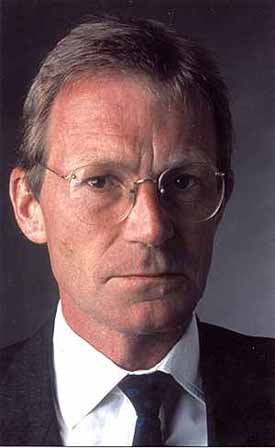“Whenever the people who work with me get downhearted,” says Nick Serota, “I remind them of how incredibly fortunate they are. They’ve had the chance to help create
He is speaking in his large and airy office at the Tate Gallery on Millbank, a tall room with views of the river, furnished and decorated in conspicuously Spartan style. There is a desk and chair, a little round table set for tea, and lots of empty space between them. All this calls to mind the words of John McEwen, art critic of the Sunday Telegraph, who, noting Serota’s tendency to display the Tate’s pictures much more sparely and sparsely than his predecessors, coined the term “Serotasis”: “a condition of which the chief symptom is a morbid love of the space between objects.” Serota’s dislike of clutter is of a piece with his sober dress sense. Ascetically slim and almost invariably dark-suited, he emanates self-restraint and was once memorably described by art dealer Leslie Waddington as looking like “a Jansenist dressed by Comme des Garcons”. Today he is wearing a slightly less severe...


